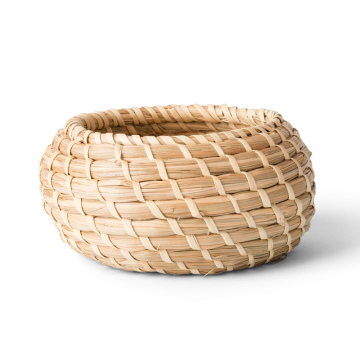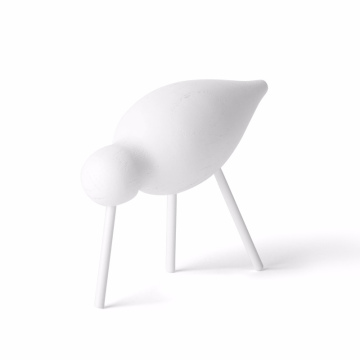Exploring the Culturally Diverse Bora Bora Islands
Introduction to Bora Bora: A Cultural Melting Pot
Bora Bora, often referred to as the jewel of the South Pacific, is not just famous for its breathtaking landscapes and turquoise lagoons; it also represents a unique blend of cultures that showcase its rich history. Located northwest of Tahiti, this small island is part of French Polynesia and is encircled by a barrier reef, creating a stunning array of motus, or small islands. The majestic Mount Otemanu, the island's highest peak, provides a dramatic backdrop to the lush greenery that characterizes this tropical paradise.
The roots of Bora Bora's culture can be traced back to its Polynesian heritage. The islands were first settled by Polynesians over a thousand years ago, bringing with them their traditions, beliefs, and social structures. Throughout the centuries, these indigenous influences have melded with those introduced by European explorers and settlers, resulting in a vibrant patchwork of customs and practices that define life on Bora Bora today. The local population is predominantly of Polynesian descent, and their customs continue to shape the island's identity.
Modern Bora Bora offers visitors a glimpse into this cultural melting pot through various means, such as traditional dance, art, and culinary experiences. Festivals celebrating ancestral gods and local traditions are an integral part of community life. Tourists can immerse themselves in the island's rich heritage by participating in cultural events and engaging with local artisans. The traditional Tahitian dance, known as ‘orè, is not only a form of entertainment but a vital way to communicate stories of ancestors and significant events in the islands' history.
By understanding the cultural influences at play in Bora Bora, visitors can appreciate the island on a deeper level. This unique blend of natural beauty and cultural depth makes Bora Bora an enchanting destination, where ancient traditions harmoniously coexist with modern life. With its stunning vistas and profound heritage, Bora Bora invites exploration, fostering a profound connection between visitors and its vibrant cultural landscape.
Traditional Polynesian Culture: Myths, Poems, and Artisanship
The rich tapestry of traditional Polynesian culture in Bora Bora is deeply woven with myths, oral traditions, and artisanal crafts that shape the identity of the island's inhabitants. This culture is characterized by a vibrant storytelling tradition that encompasses the legends and narratives passed down through generations. These stories often feature demigods, nature motifs, and the origins of the islands, acting as a means of preserving history and imparting moral lessons. The significance of these myths transcends mere entertainment; they reinforce communal values and foster a shared identity among the island's residents.
In Bora Bora, storytelling is celebrated through oral traditions, with music and dance playing integral roles in cultural ceremonies. Traditional chants and hula dances are vital components of important events such as births, weddings, and festivals, serving both as forms of artistic expression and as rituals to honor ancestors and the deities. This harmonious blend of narrative and performance reinforces community bonds and cultural pride, allowing the people of Bora Bora to connect with their past while celebrating their present.
Artisanship in Bora Bora further enriches the island’s cultural landscape. Local artisans possess remarkable skills in crafting traditional artifacts, such as woven mats, intricately carved wooden sculptures, and finely crafted jewelry made from shells and pearls. These creations are not mere commodities; they carry cultural significance, reflecting the natural environment and the spiritual beliefs of the Polynesian people. By engaging in these crafts, artisans keep the island's heritage alive, ensuring that future generations appreciate and learn from their ancestors' artistry. The vibrant myths, evocative music, and masterful craftsmanship of Bora Bora are essential elements that encapsulate the island's essence, promoting a strong sense of community and cultural continuity among its people.
Modern Influences and Cultural Fusion
Bora Bora, with its stunning natural beauty and vibrant culture, has experienced significant changes due to modern influences, especially from global tourism. As travelers flock to this idyllic island, they bring with them various customs, practices, and lifestyles that intertwine with the traditional elements of Bora Bora's heritage. This cultural exchange has resulted in a unique fusion, shaping the identity of the islanders and their way of life.
The impact of global tourism is notably reflected in Bora Bora’s cuisine. Traditional dishes, rich in local ingredients such as fish, coconut, and tropical fruits, have been enhanced by diverse culinary influences brought by tourists and expatriates. Chefs now expertly blend traditional Polynesian flavors with international cuisine, creating distinctive dishes that cater to a wide range of palates. This evolution in food not only highlights the adaptability of local practices but also reinforces the islanders' desire to share their culture with visitors.
Festivals and social customs have also transformed in response to modern dynamics. While traditional ceremonies, such as dance and song, remain central to the cultural experience, contemporary events often incorporate new themes, styles, and even international artists. These occasions celebrate both the indigenous heritage and the global connections that visitors and residents share, fostering a sense of community that embraces change while honoring the past.
As the residents of Bora Bora navigate their identities in this modern world, they face the challenge of preserving their rich cultural heritage. The unique fusion of lifestyles marks a significant evolution for the islanders, as they balance the influences of globalization with the values and traditions that define them. This ongoing cultural dialogue ensures that while Bora Bora continues to evolve, its essence remains rooted in its historical and traditional practices, creating a dynamic tapestry that is both familiar and new.
Experiencing Bora Bora’s Cultural Diversity: Tips for Travelers
Traveling to Bora Bora provides an exceptional opportunity to immerse oneself in the rich cultural tapestry of this tropical paradise. To engage meaningfully with the island's heritage, it is essential for travelers to observe local customs and etiquette. One practical approach is to schedule visits to cultural sites such as the ancient marae, which are sacred archaeological sites that offer insights into the island’s historical significance. Additionally, the lush local markets are vibrant hubs where visitors can learn about traditional crafts, foods, and music. Spending time in these areas can deepen appreciation for Bora Bora's cultural diversity.
Participating in local events is another excellent way to engage with the community. Festivals such as Heiva, a celebration of Polynesian culture including music, dance, and sporting events, provide an authentic experience that showcases the island's traditions. Travelers should consider timing their visit to coincide with such vibrant festivities. This not only supports local artisans and performers but also enhances the travel experience through interaction and learning.
As respectful engagement is crucial, familiarity with local customs and basic phrases in Tahitian can significantly enrich one’s experience. Simple greetings or expressions of gratitude, when spoken in the local language, are always appreciated and can foster positive interactions. Furthermore, dress modestly when visiting religious or culturally significant sites, as this demonstrates respect for local traditions.
In conclusion, to enjoy the cultural diversity of Bora Bora, travelers should prioritize respectful engagement with the local community, participate in festivals, and familiarize themselves with customs. These considerations will lead to a more authentic and enriching experience while exploring the captivating beauty of the Bora Bora Islands.





